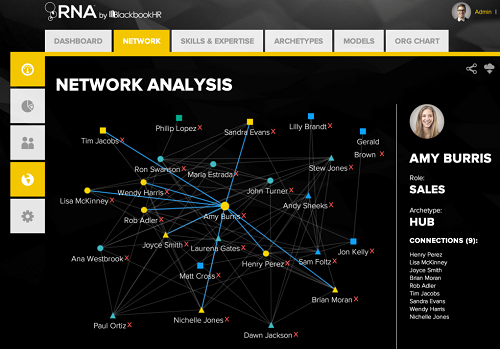T3 – Talent Tech Tuesday – is a weekly series here at The Project to educate and inform everyone who stops by on a daily/weekly basis on some great recruiting and sourcing technologies that are on the market. None of the companies who I highlight are paying me for this promotion. There are so many really cool things going on in the space and I wanted to educate myself and share what I find.
So, I’ll start about saying I’m a proud member of Blackbook HR’s Advisory Board, along with some other great HR pros. But, even prior to that I was a fan of their products – my review of Sense. This review is highlighting two new products that Blackbook HR has launched – RNA and Presto.
First, let me say that I’m not the only one who is really liking what Blackbook is doing. They were named one of the 2014 HR Tech Conference Awesome New Startups (don’t worry, I’ll be highlighting many of these others as well!).
RNA (Relationship Network Analysis) is one of Blackbook HR’s newest offerings. When I saw the demo of this at HR Tech I was blown away. It basically shows you your organization chart, but not by title, by influence! It’s super cool, and the application of uses for retention, performance and succession are really limitless. One customer is using it to transition new leaders into the organization, so they know which players they need to connect with immediately, and how their organization is really getting work done!
Some of the other really cool things RNA can do if allow you to search your organization by skills. Not only self-reported skills, but all the employees in your organization can also rate each other on those skill levels. So, you need someone for a new project that has project management skills? What about the one person in your organization that their peers rate them highest in that skill!? It does that. Losing folks to turnover or retirement and need a pool of potential replacements (Succession), you can source that data here.
Also, think about any change management. Who are the most important employees to ensure are bought into the change before rolling it out? That’s critical for success in any change, and RNA can give you these connections. You can now go out and work with these individuals first, and let them help drive the change, positively, forward. Merger and acquisitions would be another way I could see this data being extremely important.
I will say, this is much more of an enterprise type of solution. Most SMB’s probably don’t have enough data to really take advantage of this type of solution. But, if you are in the 2500+ employee range, this will blow your mind. It’s fairly inexpensive, and the analytics you get from this data are crazy, it’s well worth a demo for sure!
Presto, is Blackbook’s other new product, and it’s totally free to use! Basically, Presto is a survey App you can use within your organization, department and group. It doesn’t even have to be used for business, but that’s what it was originally designed for. Let’s say you just came out of an executive meeting and one of your senior leaders wanted to know how an announcement of some big new project was being ‘viewed’ by your employees. You could within seconds put out a survey question to your organization, and watch in real-time the survey results come back to you. Not only do you see, but everyone who participates can see the results.
I even joked you could send it out to your department to see what people wanted for lunch, and the entire group could see what everyone preferred! It’s basically a real-time way to gather feedback in your organization. Totally free. Completely simple to use. I can think of a hundred ways I could use this, or coach my hiring managers to use this in an organization. While this is a mobile app, the users can also log into a dashboard that gives you tabulated, colorful graphs, that are easily manipulated to share with your organization in which communication way you would like.
Yeah, I’m a fanboy of Blackbook HR. The thing I like is the people running the company aren’t designing things thinking, ‘what will sell’. They’re designing things thinking, ‘how do I solve this problem?’, then going, oh crap, how do we make money on this! That gives them some of the best technology on the market, which you can actually buy or in Presto’s case use for free.
Next Tuesday I’ll be looking at recruitment marketing solution SmashFly!


